BONUS: Confederacy lives in parts of Virginia
Nine-hundred miles behind us and another six-hundred to go
Please consider supporting The Front Page with a paid subscription: HERE
The American Civil War Museum in Richmond, Va. is only five years old and the combination of modern visuals and succinct story-boarding that boils down the war, its causes and its impact into an easy to understand essence is almost as impressive as its collection of artifacts from Confederate Civil War generals such as Robert E. Lee, Stonewall Jackson and Jeb Stuart.
You couldn't help but notice what was missing.
There were no personal artifacts from any of the prominent Union generals.
Considering the museum's backstory, it makes logical sense and not intentional.
The American Civil War Museum is a child of Richmond's American Civil War Center and the Museum of the Confederacy and helps explain why its Confederate leadership is represented so well.
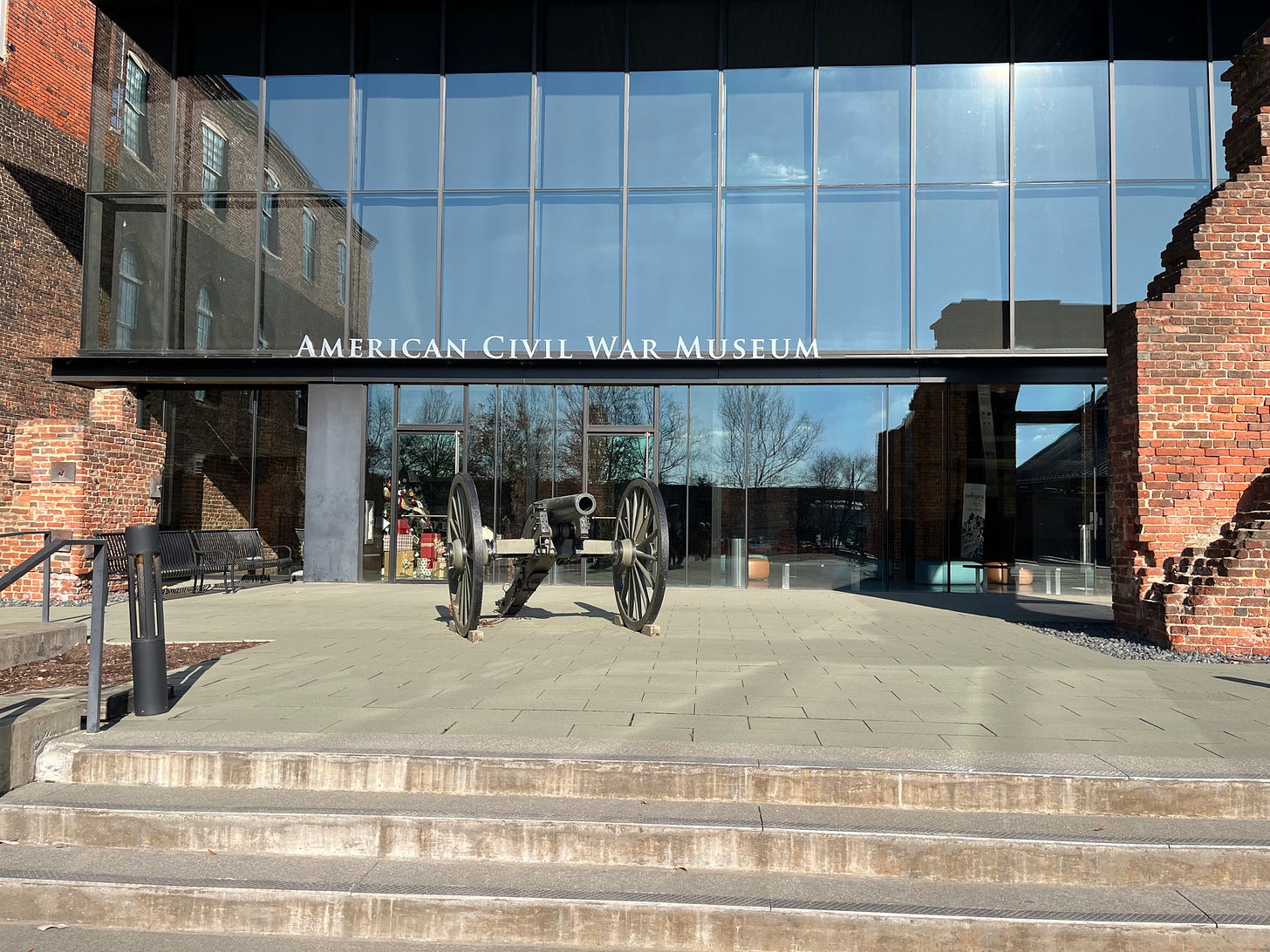
It opened a brand new facility at the site of the historic Tredegar Iron Works in Richmond in 2019. The iron works was where a good portion of Confederate munitions were produced during the world. It was burned during the siege of Richmond at the end of the Civil War. The new museum includes parts of the original ruin wall at its entry way.
Years ago when I visited the Military Museum in Paris, I noticed the French gave as much credit to the French Resistance as the Allies for defeating the Germans.
Who writes the history is important.
During the introductory film at the American Civil War Museum Thursday, it seemed to gloss over the failures of Reconstruction.
That bothered me at the time.
Richmond has been the center of much controversy over its hero worship of the Confederacy and those who fought for the South.
Monument Avenue is a tree-lined avenue with a grassy center median that celebrated Robert E. Lee, J.E.B. Stuart and Stonewall Jackson with enormous statues well into the 21st century.
But during the civil unrest after the murder of George Floyd in 2020, the statues were finally removed.
If you go back even further, a private group in 2002 raised money to commemorate the visit of President Abraham Lincoln after the fall or Richmond at the end of the Civil War.
That sparked controversy with some saying it was akin to putting a statue of Hitler in Israel. That should give you some perspective.
Remember, we're talking about the same Abraham Lincoln who did the Gettysburg Address and is revered for saving the country.
Richmond's statue of Lincoln was eventually relegated to a remote corner of downtown Richmond near the ruined iron works where it now fits in quite well near the Civil War museum.
None of that Confederate support made it into the final museum content as far as I could see.
When you dig deep into the website, the museum has gone to great lengths to chronicle how it came to its current interpretation of the Civil War:
"The American Civil War Museum Historian Advisory Council consists of scholars from across the United States who are recognized authorities in their field. With expertise that spans the full range of topics within Civil War history, their work has shaped current scholarship of that era.
"The Council is a standing body that helps to ensure that the ACWM is a leading resource for the American Civil War and its legacies. Advising on initiatives and Museum projects, the Historian Advisory Council keeps us apprised of trends in scholarship and connects the ACWM with the academic community."
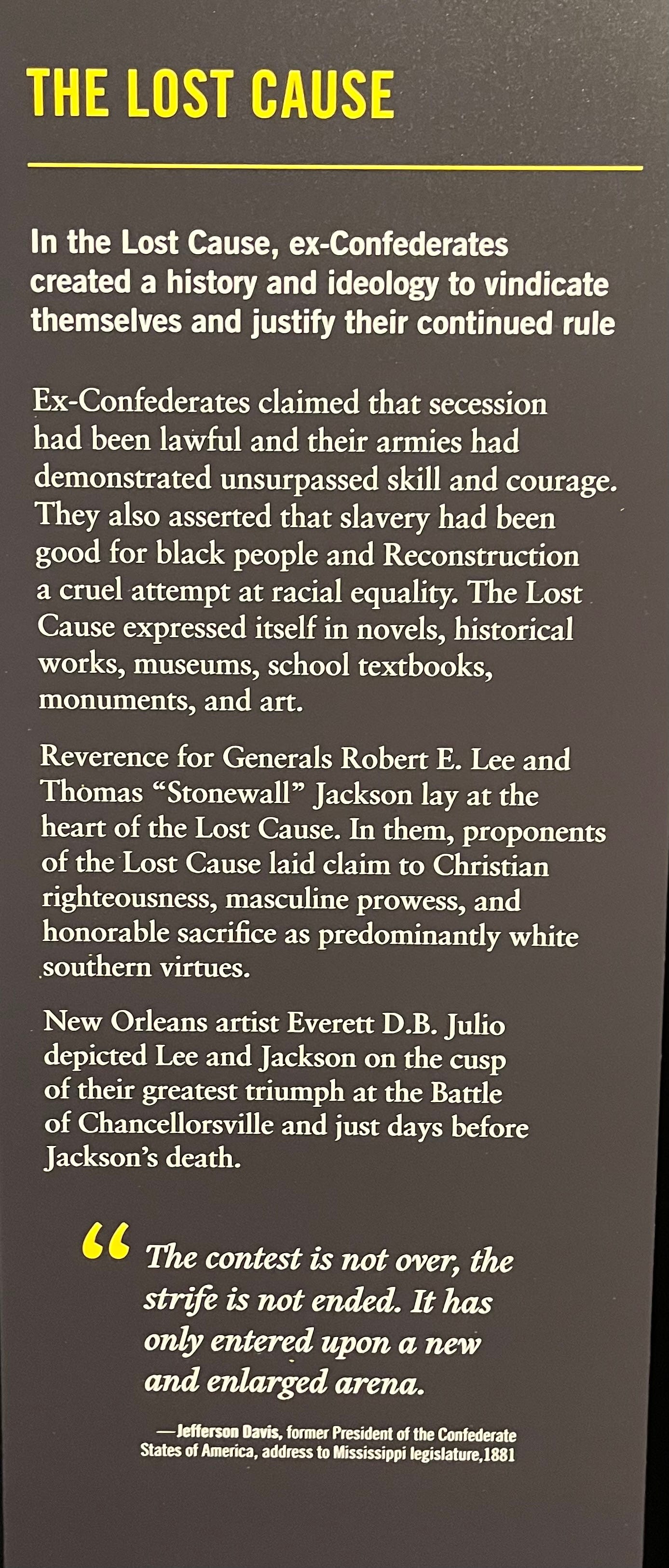
Some of the final panels in the 1865 section of the museum correct any impression that the Civil War ended racism in America.
Under a panel titled "The Lost Cause" the issue is addressed unflinchingly:
"In the Lost Cause, ex-Confederates created a history and ideology to vindicate themselves and justify their continued rule. Ex-Confederates claimed that secession had been lawful and their armies had demonstrated unsurpassed skill and courage. They also asserted that slavery had been good for black people and Reconstruction a cruel attempt at racial equality. The Lost Cause expressed itself in novels, historical works, museums, school textbooks, monuments, and art."
Sadly, it became very clear that sentiment is still prevalent in parts of Virginia.
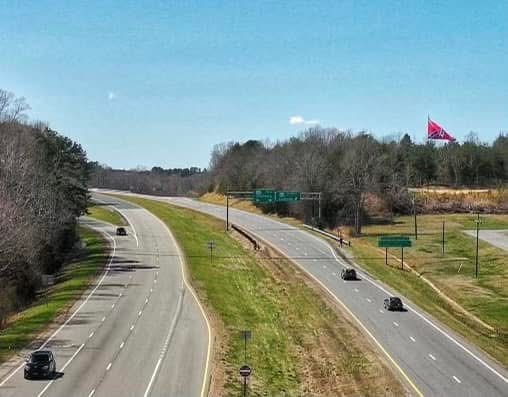
As my brother and I were driving west on Route 460 Friday through Farmville in Prince Edward County, we saw an enormous Confederate flag towering over the trees.
It took us aback.
It may have been the largest flag either of us had ever seen.
The flag has been the source of some controversy and consternation from the county board of supervisors, especially since Prince Edward County was at the forefront of segregation as one of the five defendants in the 1954 Brown vs. Board of Education decision that banned segregation in public schools. Rather than comply with the Supreme Court ruling banning segregation, the county closed its public schools for five years (1959-64).
Not the best historical footnote for any place to have.
The flag pole rises 80 feet high and cost over $28,000 to put up. The flag covers some 600 square feet.
The county has tried to revoke the original building permit to get the flag removed but has so far been unsuccessful.
Freedom of expression seems to be on the side of the mother and son who erected the flag pole.
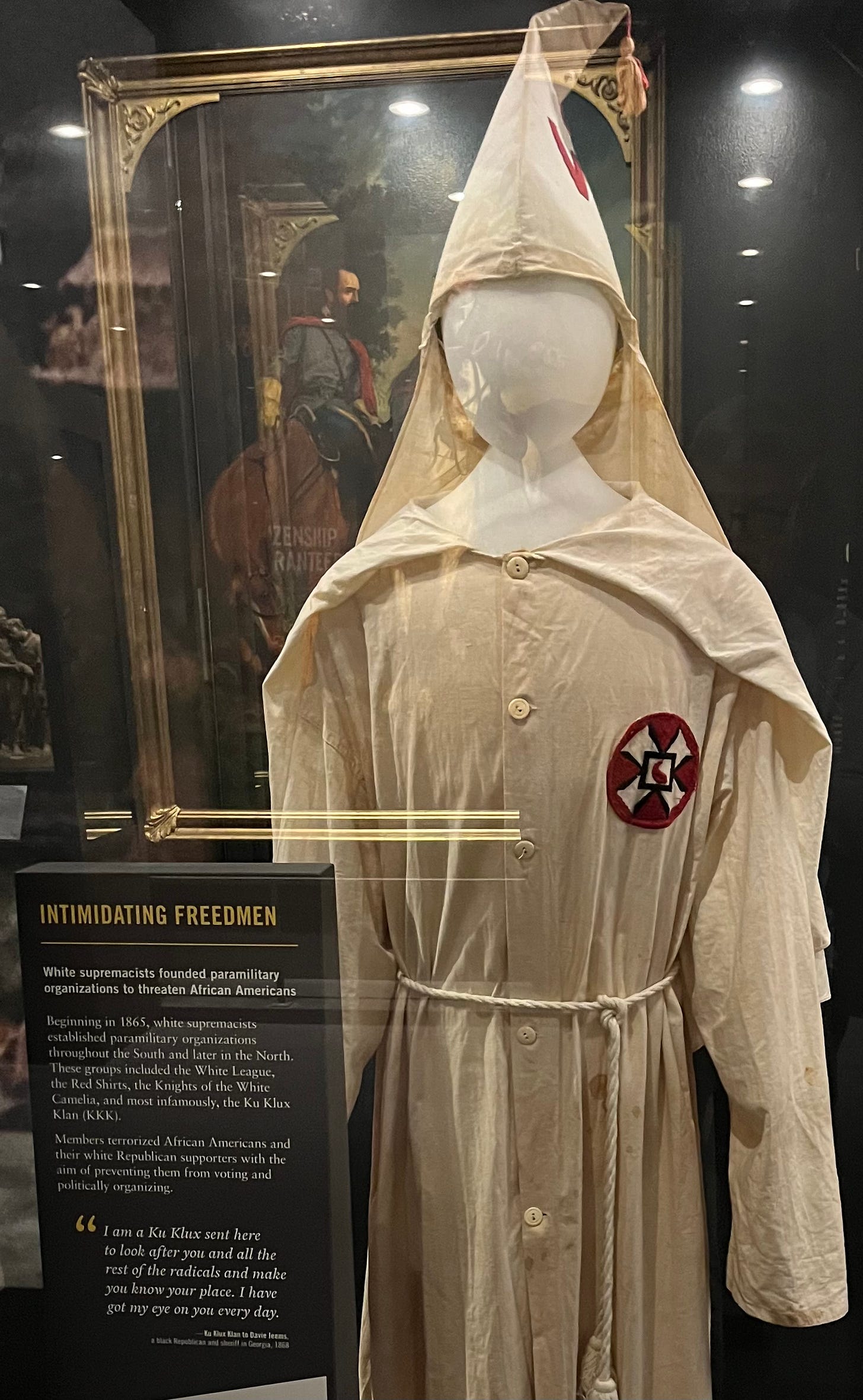
The final display in the American Civil War Museum shows a Ku Klux Klan robe and explains its reign of terror after the Civil War.
For many of us, that is what the Confederate flag represents.
But obviously, not everyone.
On Facebook, I found a plea for members of the general public to contribute to the defense of those Confederate flag supporters by contributing to "Roadside Memorial Battle Flags."
They provided a link to contribute through PayPal. When I called up the link Friday night, not one person had contributed.
Maybe there is still hope for our country.
Friday's update
After a tourism day on Thursday, we headed west Friday through Lynchburg, Roanoke and on to Knoxville, Tennessee where on the final stretch of I-81 we once again were slowed by unexplainable bumper to bumper traffic.
It was getting a little tedious when I wondered for the first time if I was too damn old for this.
By Friday night we had completed nearly 900 of the 1,500 miles to New Orleans.
We our off to see the Lookout Mountain Battlefield in Chattanooga on Saturday and then on to Montgomery, Alabama.
Sophie update
Sophie's comfort was of paramount concern for me during this trip. She landed a prime location in the backseat with a luxurious bed with a view.
I packed snacks and portable water dishes and made sure to walk her at every stop.
She has been an angel and we often forget she is even back there.
But Thursday night, she seemed a little antsy after dinner when we usually play with one of her many toys at home.
The problem was I forgot to bring any of her toys.
I meant to grab a tennis ball, but I forgot that, too.
Thankfully, we found a Cracker Barrel to have dinner at Friday evening. It has a great gift shop so I picked up a stuffed animal.
Sophie seemed delighted.
Our hotel also had an indoor pool that no one was using, so I took Sophie in there and played catch with her with the new toy as she raced around the empty pool.
She should sleep well tonight.
Ken Tingley spent more than four decades working in small community newspapers in upstate New York. Since retirement in 2020 he has written three books and is currently adapting his second book "The Last American Newspaper" into a play. He currently lives in Queensbury, N.Y.

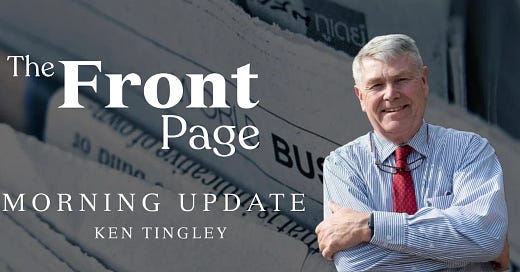



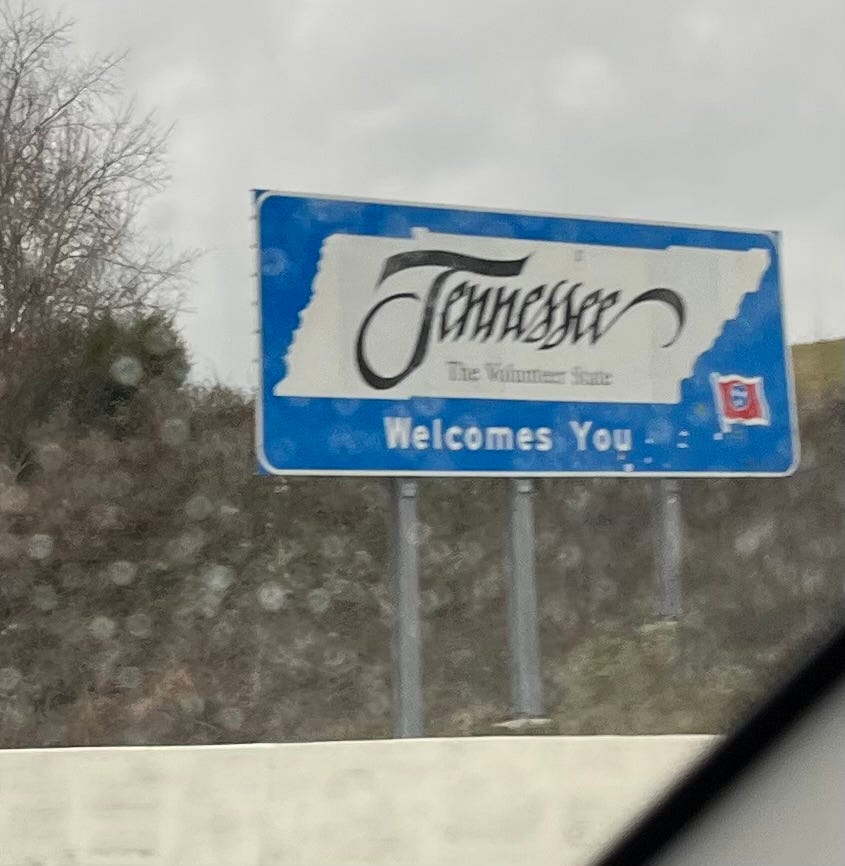
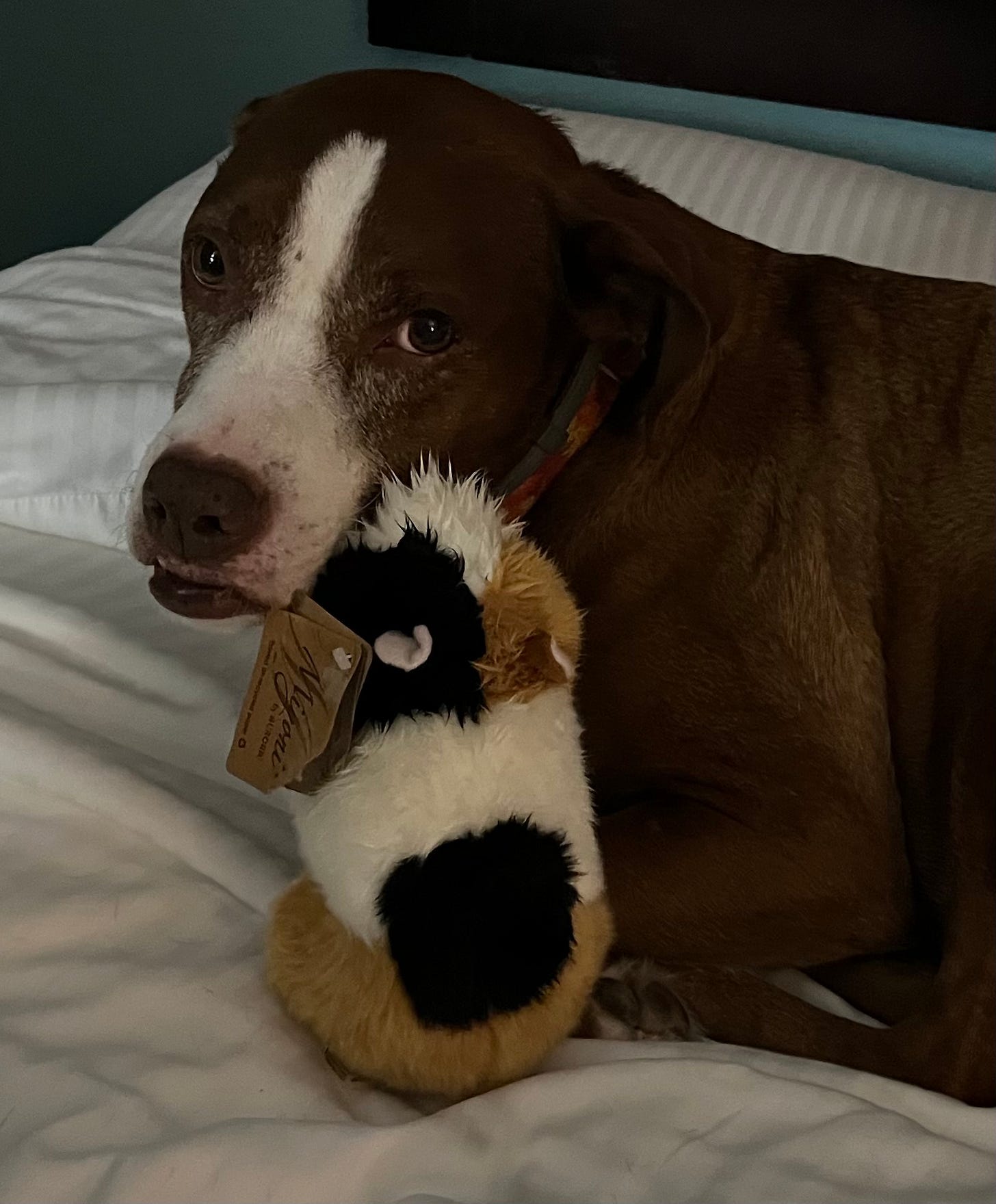
Born in Macon Georgia, in the Sixties I volunteered for James Farmer, founder of CORE, and leader of the Freedom Rides, while home on leave from the Navy. A few years before, 3 other volunteers for CORE in Mississippi were not so lucky. We now can tell the rednecks there's finally an African American worthy of being 'sent back to Africa': Elon Musk.
Thank you for this column. We moved to VA from Iowa in 2007. That confederate flag always jumped out at us when we traveled past. Thank you for the background. My negative comments about it caused a huge falling out with my neighbor when I first saw it. Thanks for sharing more illustrious history. Prayers for your healing.